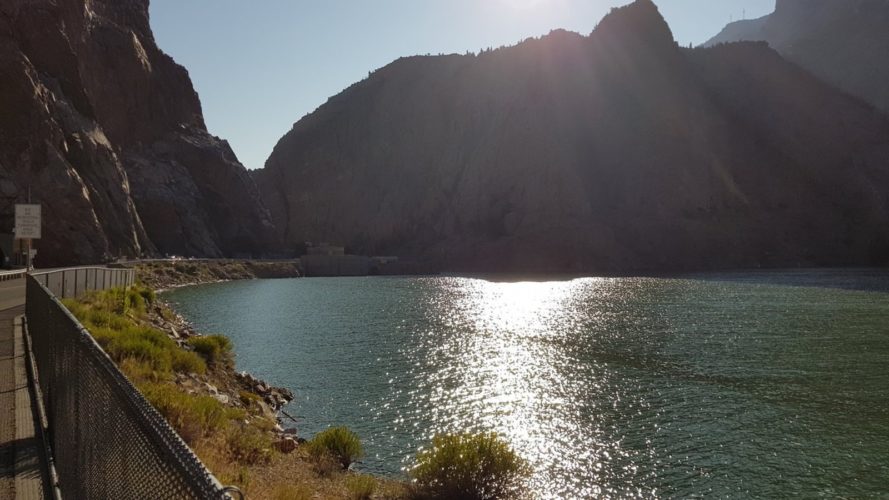Cowboy State Daily
Although Buffalo Bill Reservoir is Low, Long-Submerged Ghost Town Unlikely To Reappear
Although not at historic lows, the Buffalo Bill Reservoir near Cody has dried up so much that a large amount of land that is usually submerged is seeing the light of day right now.

This story first appeared on Cowboy State Daily
By Wendy Corr, Cowboy State Daily
Although not at historic lows, the Buffalo Bill Reservoir near Cody has dried up so much that a large amount of land that is usually submerged is seeing the light of day right now.
As of September 30, the Buffalo Bill Reservoir is holding just over 405 thousand acre-feet, the lowest it’s been in a year and a half – and lower than it usually is at this time of the year.
Michael Follum is the Chief of the Water and Civil Works Branch for the Wyoming Area Office of the U.S. Bureau of Reclamation. He says the reservoir is lower than usual, but not considered drastically low.
“We are a little bit below average,” he said, “but when you’re looking at the whole reservoir, we’re not too far off what would be considered average.”
But should the water level drop much lower, could a piece of history long-submerged see the light of day?
Leslie Slater-Wilson is the executive director of the Buffalo Bill Dam Visitor Center, which displays the history of what was once considered the tallest dam in the world, when it was completed in 1910. The dam project changed the course of the north and south forks of the Shoshone River, allowing farmers and ranchers in the Big Horn Basin to irrigate their fields.
“So about a mile and a half west of here, was a little town of Marquette,” she said. “It had some ranches, had a schoolhouse and a post office, and the government bought the land from the ranchers. And the settlers were allowed to stay until 1910 when the reservoir started to fill up.”
“Marquette was never a ‘town’ with residents and streets,” Brian Beauvais, Curator of the Park County Archives, said. “It was instead a couple of buildings housing a post office, general stores, and saloons. It was a base for all the surrounding farms and ranches. And when the Reservoir was flooded all the buildings were removed and relocated.”
So as the summer goes on, and the water levels in the Buffalo Bill Reservoir drop, some locals wonder how low will the levels go before they start seeing the remnants of the town of Marquette?
Never, according to Cody historian Bob Richard. He says the likelihood of seeing any remnants of Marquette would be very small.
“There could have been two or three outbuildings,” he said. “There were some homesteads further up on the North Fork, that cabins were still left there when they filled it.”
Other reservoirs in the country have experienced water levels so low that remnants of old ghost towns and other hidden historical artifacts have been revealed.
On September 11, it was reported that a drone passing over the Rockport Reservoir in Utah showed the remnants of the town of Rockport. According to officials, the town, which was originally founded in 1860, has been under the waters of the Rockport Reservoir since the late 1950s.
And just three years ago, the receding water at the Buffalo Bill Reservoir uncovered the remains of a wooly mammoth. The discovery was made in April of 2018, after receding waters on the southeast shore of the Reservoir revealed bones and other artifacts.
However, at its deepest point, the reservoir measures 157 feet from the surface – so even if water levels dropped to historic lows, it would be years before the remnants of the gathering of buildings near George Marquette’s store would be visible.
“It would take a major drought, which we haven’t had here,” Richard said, “unless we had a drought for several years. I don’t think that’s going to happen.”
***For All Things Wyoming, Sign-Up For Our Daily Newsletter***

